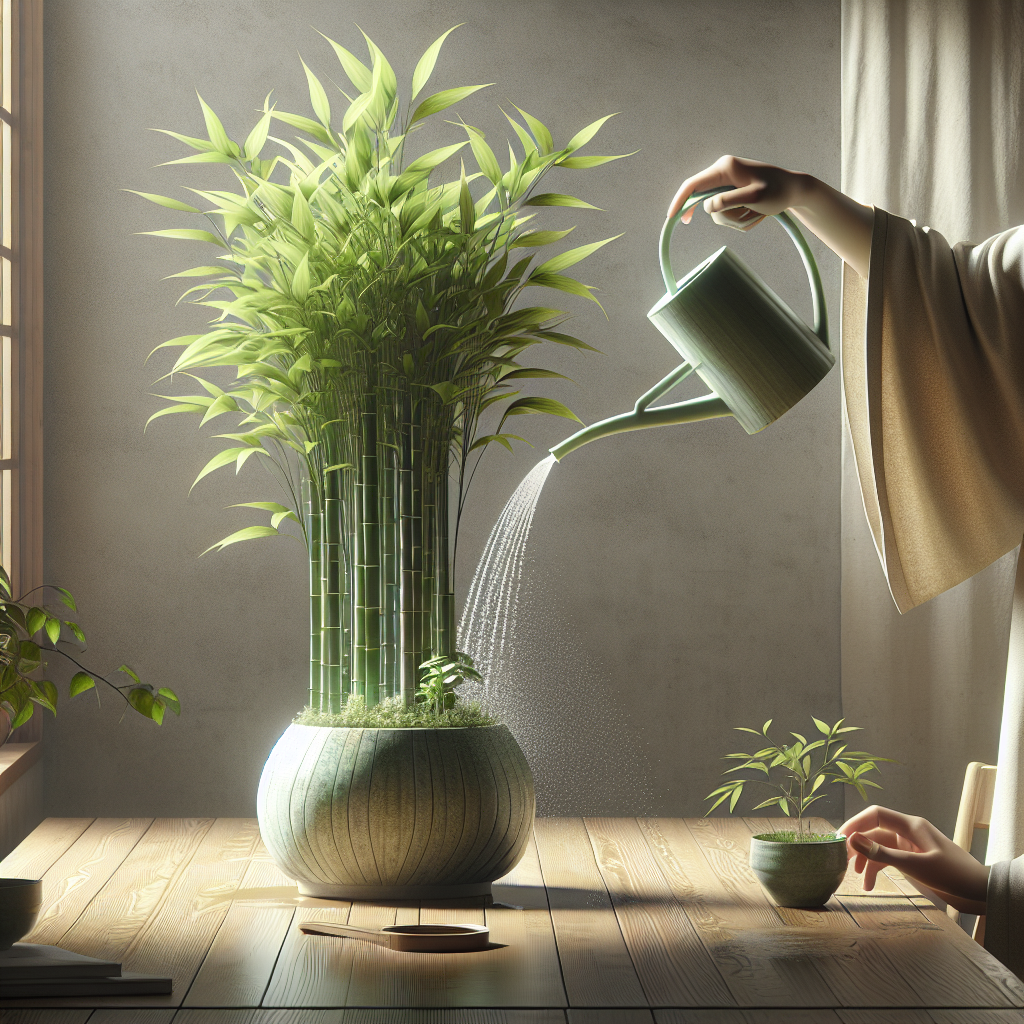
How to water a bamboo plant
Understanding Bamboo Plants
Bamboo is a remarkable plant that has gained immense popularity in gardens and homes due to its unique appearance and versatility. Known for its fast growth and resilience, bamboo is an ideal choice for many landscaping projects, privacy screens, and indoor decor. However, to ensure that your bamboo thrives and maintains its beauty, proper care is essential, particularly in terms of watering.
The Importance of Watering Bamboo
Like all plants, bamboo requires a careful balance of moisture to grow effectively. While bamboo is resilient to drought, it will flourish with the right watering schedule. Sufficient water supports the plant's nutrient uptake, aids in photosynthesis, and helps maintain overall health.
How Much Water Does Bamboo Need?
The water needs of bamboo can vary based on several factors, including the type of bamboo, climate, and the soil in which it is planted. Here's a breakdown of how much water your bamboo plant might require:
- Young Bamboo: Newly planted bamboo requires more frequent watering to establish its root system, typically 1-2 times a week.
- Established Bamboo: Once established, bamboo can generally thrive with less frequent watering, about once every 1-2 weeks, depending on rainfall and climate conditions.
- Climate Considerations: In dry or hot climates, bamboo may need more frequent watering compared to cooler, moist environments.
Best Practices for Watering Bamboo
Proper watering techniques can make a significant difference in the health of your bamboo plant. Below are several best practices to follow:
Use the Right Watering Method
When it comes to watering bamboo, there are several methods you can use:
- Soaking Technique: For young bamboo, soak the base of the plant to allow deep water penetration.
- Drip Irrigation: This method is efficient and can provide a slow, steady supply of moisture.
- Sprinklers: If watering a large area, sprinklers can be a convenient option, but avoid over-saturating the soil.
Check Soil Moisture
Before watering, always check the soil moisture. Bamboo prefers well-draining soil that retains some moisture but does not stay soggy. Here’s how to check the soil:
- Stick your finger about an inch into the soil.
- If it feels dry, it's time to water. If it's still moist, wait a few more days.
Water in the Right Season
The growing season for bamboo generally occurs during spring and summer. During these months, it will typically need more water. Conversely, in autumn and winter, you can lessen your watering schedule as bamboo enters a dormancy phase.
Signs Your Bamboo Needs Water
It’s crucial to observe your bamboo plant regularly to spot any signs of water stress. Here are some indicators:
- Wilting Leaves: If the leaves appear droopy or wilted, it may indicate the plant is thirsty.
- Browning Tips: Brown leaf tips are a sign of underwatering.
- Yellowing Stalks: This could indicate too much water or insufficient nutrients, requiring immediate attention.
How to Properly Water a Bamboo Plant
Following the right procedure is essential when watering a bamboo plant. Here are some steps to ensure you water effectively:
- Begin by assessing the moisture content of the soil.
- Using your chosen watering method, apply water slowly to allow it to soak in.
- Ensure water reaches the roots by watering deeply and less frequently.
- After watering, check for good drainage to prevent waterlogging.
- Monitor the plant over the following days for signs of improvement or stress.
Special Considerations for Indoor Bamboo
If you have bamboo growing indoors, there are additional considerations to keep in mind:
- Watering Frequency: Indoor bamboo may require more frequent watering than outdoor varieties due to factors like indoor heating and limited light.
- Humidity Levels: Ensure adequate humidity levels for bamboo, especially if it's in a dry environment. Consider misting the plant or using a humidity tray.
- Container Size: Make sure the pot is large enough to accommodate root growth while allowing for proper drainage.
Conclusion
Successful bamboo cultivation hinges on understanding the specific needs of your bamboo plant regarding moisture. Although bamboo is relatively low-maintenance, learning how to water a bamboo plant properly can significantly enhance its growth and overall health. By practicing regular soil checks, adjusting watering schedules with the seasons, and observing the plant for any signs of stress, you can ensure your bamboo thrives. Following these guidelines will not only make caring for bamboo easier but will also reward you with a stunning, lush addition to your garden or indoor space.
By Guest, Published on October 24th, 2024